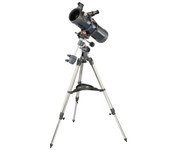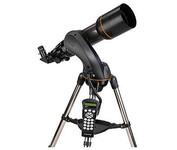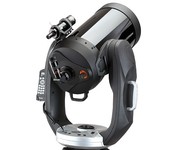Products reviews
Celestron AstroMaster 114EQ (100 x 114mm) Telescope$135.00 to $270.00
Tags:celestron, astromaster, 114eq, 100, x, 114mm, telescope, | Celestron NexStar 102 SLT (200 x 102mm) Telescope$410.00 to $480.00
Tags:celestron, nexstar, 102, slt, 200, x, 102mm, telescope, | Celestron CPC 1100 GPS (XLT) (70 x 280mm) Telescope$2,799.00
Tags:celestron, cpc, 1100, gps, xlt, 70, x, 280mm, telescope, |
Celestron NexStar 60 SLT (120 x 60mm) Telescope
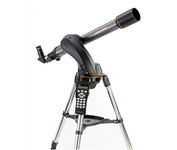
Our most affordable NexStar telescope turns starry nights into space odysseys. The 60mm refractors come with a fully computerized hand control with a database of over 4,000 celestial objects. With its pre-assembled, adjustable steel tripod, the NexStar 60 SLT can be up and ready to use in a matter of minutes
Bushnell NorthStar 78-8845 (675 x 114mm) Telescope
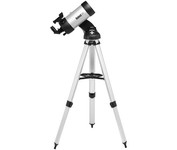
Our most powerfull, advanced technology reflector telescope with up to 675x magnification and massive 4 1/2 inch reflector mirror. "Goto" Computerized tracking technology. Red Dot LED finderscope. Remote hand-held control module. Camera adaptable. Quick release tripod. Kinematic mount. Accessory tray. 20,000 Object Onboard Starfinding Computer. 1.25" Format Eyepieces. Barlow Lens. A great starting telescope!Minimize
Celestron AstroMaster 70EQ (90 x 70mm) Telescope
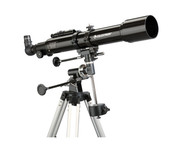
If you're looking for a dual-purpose telescope appropriate for both terrestrial and celestial viewing, then the AstroMaster Series is for you. Each AstroMaster model is capable of giving correct views of land and sky. The AstroMaster Series produce bright, clear images of the Moon and planets. It is easy to see the moons of Jupiter and the rings of Saturn with every one of these fine instruments. For views of the brighter deep space objects like galaxies and nebulae, we recommend the larger aperture and light gathering ability of the Newtonian reflectors.Minimize
Celestron AstroMaster 70 AZ (160 x 70mm) Telescope
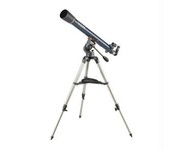
The AstroMaster produce bright, clear images of the Moon and planets. It is easy to see the moons of Jupiter and the rings of Saturn with every one of these fine instruments.
